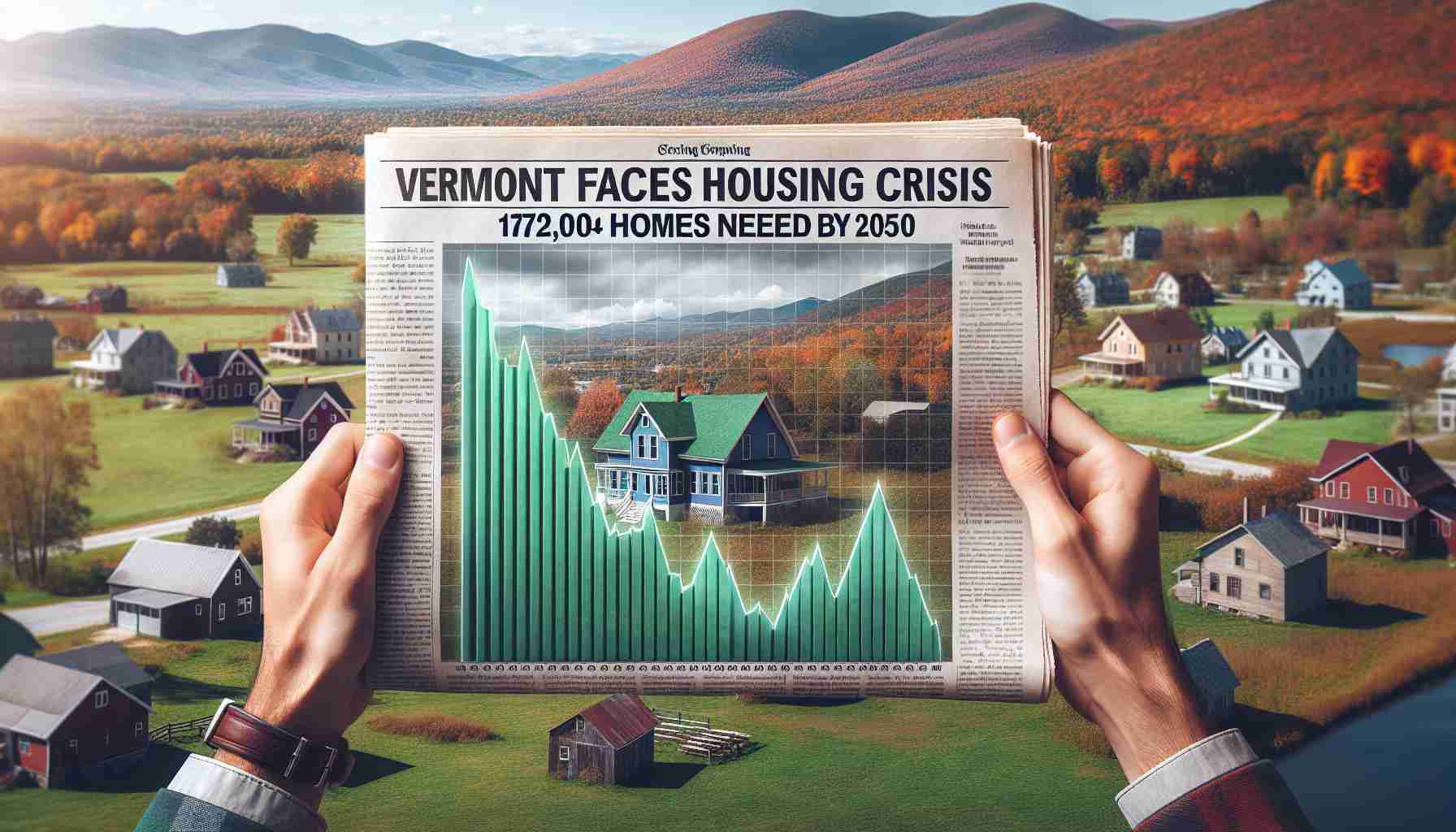- Vermont must construct 172,000 homes by 2050, averaging 7,000 new homes annually.
- The state issued only 2,456 building permits in 2023, showcasing a significant shortfall.
- A total of 41,000 additional homes are needed by 2030 to keep pace with demand.
- The housing growth rate has been the slowest since the 1950s, with just 1,178 new homes added per year from 2010 to 2020.
- Over 15% of homes in Vermont are seasonal, limiting the availability of year-round housing.
- The housing market is further complicated by seniors staying in their homes, restricting opportunities for younger families.
- Collaboration with local governments is crucial to meet ambitious housing development goals.
Vermont is staring down a monumental challenge: to build a staggering 172,000 homes by 2050. A recent study reveals that the state must ramp up construction to 7,000 new homes every year for the next 25 years to finally address its longtime housing shortage.
Historically, Vermont peaked at 4,800 homes built in a single year back in 1988. Fast forward to 2023, only 2,456 building permits were issued, revealing a gap that’s too wide to ignore in the face of rising demand. Housing officials are echoing a clarion call for urgency, knowing that the current pace cannot satisfy growing needs, especially with 41,000 additional homes needed just by 2030.
The housing landscape has dramatically shifted over the past decades. With the slowest growth rate since the 1950s, Vermont reports a housing stock increase of merely 1,178 homes annually from 2010 to 2020. This lag in development is compounded by a notable percentage of homes—over 15% of the total—classified as seasonal, further squeezing the market.
Also, a significant demographic reality looms large: many seniors are choosing to remain in their homes post-retirement, which keeps younger families from entering the market. Adding to this complex puzzle is the pandemic-induced migration trend of 2021 and 2022, further straining an already tight housing market.
The takeaway? Vermont’s housing crisis demands immediate action. Leaders urge collaboration with local municipalities to break down these daunting numbers into manageable targets, turning the tide of underdevelopment into a future rich in opportunity for residents.
Vermont’s Housing Crisis: The Urgent Call for 172,000 New Homes by 2050
## Understanding Vermont’s Housing Challenge
Vermont faces a critical housing crisis that necessitates the construction of 172,000 new homes by 2050. The current construction rate is alarmingly low, with only 2,456 building permits issued in 2023, far from the 7,000 homes per year required to meet demand. The state’s need for urgent intervention is highlighted by the fact that 41,000 additional homes must be built by 2030 to alleviate the current shortage.
Key Insights and Trends
1. Historical Context: Vermont’s peak in home construction was 4,800 homes in 1988, far above today’s numbers, indicating a persistent downward trend in new builds.
2. Demographic Changes: The aging population in Vermont leads many seniors to stay in their homes longer, often resulting in a reduced number of available properties for younger families.
3. Market Dynamics: Over 15% of existing homes are seasonal, which does not aid the market’s need for year-round housing solutions.
4. External Influences: Post-pandemic migration has intensified competition for limited housing, drawing in newcomers and exacerbating the shortage.
5. Future Projections: Without significant intervention, Vermont will not only fall short of its ambitious housing goals but also face increasingly dire consequences for its economy and community stability.
Pros and Cons of Vermont’s Current Housing Strategy
– Pros:
– Potential for economic growth with increased construction.
– Improved availability of affordable housing could attract a younger workforce.
– Collaborative efforts with municipalities may foster better planning and execution.
– Cons:
– Significant financial investment required to ramp up construction.
– Possible pushback from communities resistant to new development.
– Risk of environmental impacts from large-scale construction.
Predictions and Market Forecasts
– Short-Term: Without immediate action, housing prices are expected to continue rising, driven by competitive demand.
– Long-Term: If the annual target of 7,000 homes is met, Vermont could see a stabilization in housing prices and improved affordability by the early 2030s.
Frequently Asked Questions
1. What are the biggest barriers to building more homes in Vermont?
– Key barriers include regulatory hurdles, community opposition to development, and the need for significant investment in infrastructure to support new housing.
2. How can Vermont effectively reach its target of 172,000 new homes by 2050?
– Strategies include fostering public-private partnerships, streamlining permitting processes, and incentivizing developments that meet community needs.
3. What role does zoning play in Vermont’s housing crisis?
– Zoning laws often restrict the density of housing, which can limit the number of new units that can be built. Reforming these laws could facilitate faster development.
Conclusion
Vermont’s urgent need for housing solutions is clear. By addressing regulatory barriers and enhancing collaboration between state and local governments, Vermont can set itself on a path to not only meet but potentially exceed its housing goals, securing a vibrant future for all residents.
For more information on Vermont’s housing strategies, visit Vermont Agency of Commerce and Community Development.
